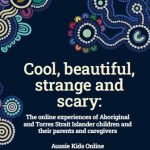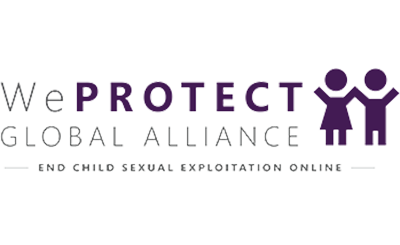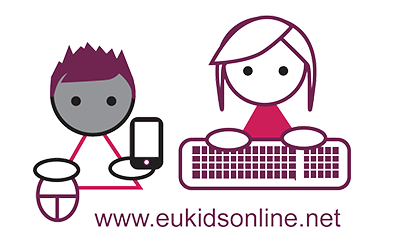 Cool, beautiful, strange and scary is the second in a series of reports that draws on the findings of the Aussie Kids Online survey, an adaptation of the Global Kids Online questionnaire. Over 3,500 children and their parents completed the survey in mid-2021, providing valuable insight into the online experiences of young people, and the digital parenting practices of their parents/caregivers.
Cool, beautiful, strange and scary is the second in a series of reports that draws on the findings of the Aussie Kids Online survey, an adaptation of the Global Kids Online questionnaire. Over 3,500 children and their parents completed the survey in mid-2021, providing valuable insight into the online experiences of young people, and the digital parenting practices of their parents/caregivers.
The internet is an important meeting place for First Nations children
Aboriginal and Torres Strait Islander children are much more likely to make new friends or contacts online than the national average (37% compared with 20% overall). They are also more likely to connect with people from places or backgrounds different to theirs, and to add people to their contact list that they have never met face to face.

Aboriginal and Torres Strait Islander children use the internet to make sense of the world around them.
There is a much higher level of online civic engagement among Aboriginal and Torres Strait Islander children compared to the national average. Almost one-third (30%) of Aboriginal and Torres Strait Islander children discussed social and political problems online weekly or more often – at least double the national average of 13%. Aboriginal and Torres Strait Islander children were also more likely to access news online (42% compared to 31% overall).
Use of the internet by Aboriginal and Torres Strait Islander children for learning and for civic participation – comparison with Australian children overall (% weekly or more often)

The internet is a vital source of health information and emotional support for Aboriginal and Torres Strait Islander children
The data indicates that around a third of Aboriginal and Torres Strait Islander children seek information online relating to physical (35%) or mental (31%) health (weekly or more often), more than double the national average of 17% and 13%, respectively. Among children aged 14–17, Aboriginal and Torres Strait Islanders were much more likely to look online for sexual health information each week than the national average for the same cohort (40% compared with 13%).
Use of the internet by Abopriginal and Torres Strait Islander children to look for health information and to seek emotional support – comparison with Australian children overall (% weekly or more often)

The internet provides Aboriginal and Torres Strait Islander children with an important outlet for creativity and cultural expression
Our report shows that First Nations children are almost twice as likely as young Australians overall to post original video or music online weekly or more often (37% compared with 19% overall), and more than twice as likely to post their own story or blog (35% compared with 16% overall).

Aboriginal and Torres Strait Islander children are more likely to experience online abuse than the national average
Troublingly, the report also shows that First Nations children face a greater risk of exposure to a range of other harmful content and are nearly three times more likely to report experiencing hate speech. The impact of these experiences on Aboriginal and Torres Strait islander children can be profound, with a comparatively high proportion reporting detriments to their mental health (31%), schoolwork (23%) and reputation (27%).
Experience of hate speech online among Aboriginal and Torres Strait Islander children – comparison with Australian children overall (% past 12 months)

Parental mediation is typically high among First Nations families, which is reflected in their child’s proactive response to online harms
Parents and caregivers of Aboriginal and Torres Strait Islander children are closely engaged with their child’s internet use and are highly likely to employ strategies for safer internet use with their children. In turn, Aboriginal and Torres Strait Islander children are relatively proactive and knowledgeable about the actions they can take to reduce harm.
Action taken by Aboriginal and Torres Strait Islander children after the most recent negative online experience – comparison with Australian children overall

Aboriginal and Torres Strait Islander children have a balanced view of the internet
Aboriginal and Torres Strait Islander children have conflicting perceptions of the internet and are wary of its potential to cause harm while acknowledging its many benefits to their lives. This cautious enthusiasm will stand Aboriginal and Torres Strait Islander children in good stead as their lives become ever more entwined with the digital environment.
About the survey
In 2021, eSafety commissioned an online survey of 3,500 young people (aged 8-17 years) and their parents to explore the opportunities and risks encountered in the online environment, and the role parents and carers play in their children’s digital lives. The survey was an adaptation of the Global Kids Online questionnaire and will be repeated in 2024. For more information about the survey methodology, see Mind the Gap Methodology report – Aussie Kids Online. For more findings see here.
eSafety Commissioner
eSafety helps Australians to have safer and more positive experiences online. The eSafety research program supports, encourages, conducts and evaluates research about online safety for Australians.
eSafety partnered with First Nations organisations to release a comprehensive suite of new resources and advice to help empower communities to stay safe and active online, and ensure their voices, music and stories continue to be heard. Available at eSafety.gov.au/first-nations, the resources include new video and audio content in multiple languages.
Find eSafety research at: eSafety.gov.au/research.
For enquiries about the eSafety research program, please contact research@esafety.gov.au.








